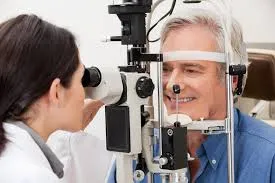Understanding the Different Types of Glaucoma

Glaucoma is a group of eye conditions primarily affecting the optic nerve, the link between the eyes and brain. This damage is often associated with increased intraocular pressure (pressure within the eye) and can lead to vision loss if not managed. It is one of the leading causes of irreversible blindness globally, making awareness and early detection necessary.
Understanding Glaucoma
Glaucoma is characterized by damage to the optic nerve. This damage usually occurs due to increased pressure in the eye, but certain forms may develop without noticeable pressure changes. The optic nerve consists of millions of nerve fibers, and when it sustains damage, visual signals from the eye fail to reach the brain effectively. Over time, this can result in a loss of peripheral vision and, eventually, central vision.
Types of Glaucoma
Glaucoma is a group of eye conditions that damage the optic nerve, often caused by high intraocular pressure. It’s a leading cause of blindness worldwide, but early detection and treatment can help preserve vision. Here’s an overview of the main types:
- Open-Angle: The most common type, making up 90% of cases. It develops gradually as the eye’s drainage canals clog, increasing eye pressure. Symptoms slowly appear, so vision changes may go unnoticed until significant damage occurs.
- Angle-Closure: This type happens when the drainage angle between the cornea and iris becomes blocked or too narrow. It can develop suddenly (acute angle-closure glaucoma), causing a rapid rise in eye pressure. Acute attacks are medical emergencies requiring immediate care.
- Normal-Tension: This form damages the optic nerve without high eye pressure, possibly due to reduced blood flow. It shows that factors beyond eye pressure can cause glaucoma.
Causes and Risk Factors
Several factors can contribute to the development of glaucoma. Age plays a significant role, with the likelihood increasing after 40 and rising sharply after 60. A family history of glaucoma also raises the risk, as does the presence of underlying health conditions such as diabetes, hypertension, and thin corneas. Eye injuries or prolonged use of steroid medications may further elevate the chances of developing this condition.
Symptoms and Diagnosis
Glaucoma, often called the “silent thief of sight,” typically shows no noticeable symptoms in its early stages, making early detection necessary. When symptoms do occur, they may include a gradual loss of peripheral vision, blurred vision or halos around lights, and, in cases of angle-closure glaucoma, eye pain, and redness. Diagnosing glaucoma involves tests such as tonometry to measure intraocular pressure, ophthalmoscopy to examine the optic nerve, and visual field tests to evaluate peripheral vision. Early diagnosis is necessary when it comes to preserving vision and slowing the progression of this condition.
Lifestyle Changes to Manage Glaucoma
Certain lifestyle practices may help manage glaucoma alongside medical treatments. A healthy diet that includes green leafy vegetables, omega-3 fatty acids, and foods rich in antioxidants can benefit eye health. Regular moderate exercise may also help lower eye pressure. Stress management techniques, such as yoga and meditation, could indirectly support glaucoma management by reducing overall stress levels. Consult with a healthcare professional before making any significant lifestyle adjustments.
Prioritize Your Eye Health
Understanding glaucoma is a step in protecting your vision. Regular eye exams and healthy habits can have a significant impact. Contact an eye care professional to create a personalized plan for long-term eye health.





